Checking a clear cloud cover forecast might lead you to believe that it’s a perfect night for astrophotography or visual observing. However, it’s essential to remember that various other factors in the sky can also impact your experience and success, beyond just the presence of clouds.
1. Light pollution
Light pollution is a well-known concern, often the first one that comes to mind. Hence, it takes the top spot in this discussion. However, it’s important to note that the impact of light pollution can vary based on the sky condition. For instance, on a clear and crisp night, neighboring town lights may not spread as far compared to a humid or dusty night.
Light pollution can exhibit variability as well. For instance, on the night when you’re eager to capture a stunning image of a galaxy, there might coincidentally be an all-night softball tournament or a restaurant opening that utilizes a powerful spotlight. And of course many people consider the Moon to be a form of “Light pollution”, at least it has a similar affect.
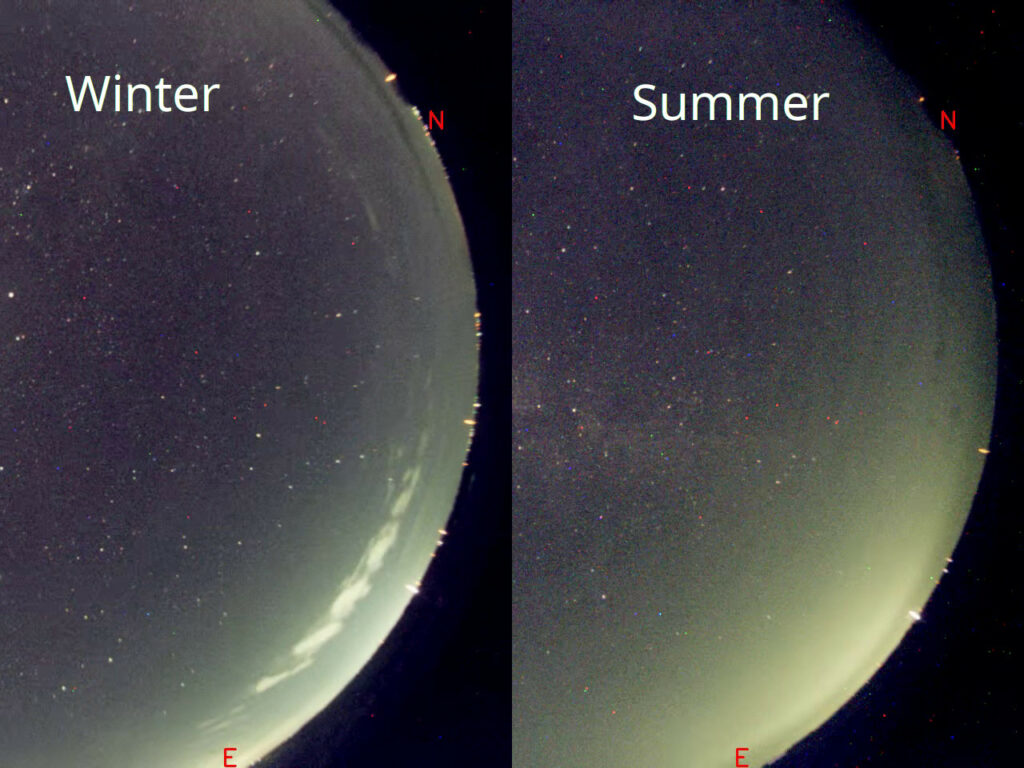
2. Smoke and other air particles
Smoke presence is often not included in regular weather forecasts. You might check the forecast, expecting clear skies, but find that visibility is significantly reduced due to smoke. However, some astronomy-focused weather forecasts do account for smoke. For instance, tools like ‘Atmospheric‘ offer a satellite view with a toggle option to display the smoke layer, helping you assess the impact of smoke on your observing.
Assuming you can simply step outside and determine if it’s smokey might seem reasonable. Perhaps you can even smell the smoke. However, once smoke rises high into the atmosphere, its scent might not be noticeable. Moreover, to truly distinguish between a smokey night and simply not being dark-adapted yet, you need to give your eyes some time to adjust. Alternatively, using an all-sky camera can provide instant information without the need to wait for your eyes to adapt, offering a quick and accurate assessment of the sky conditions.
An all-sky camera with IR sensitivity can show you smoke and thin high clouds without leaving your chair.
3. Natural Airglow (Nightglow)
Airglow is a phenomenon resulting from chemical and physical processes that excite and ionize atoms and molecules in the upper atmosphere, leading to the release of energy in the form of light. In astrophotography images, airglow often appears as a green background, but it’s not consistently present and can be puzzling to those encountering it for the first time.
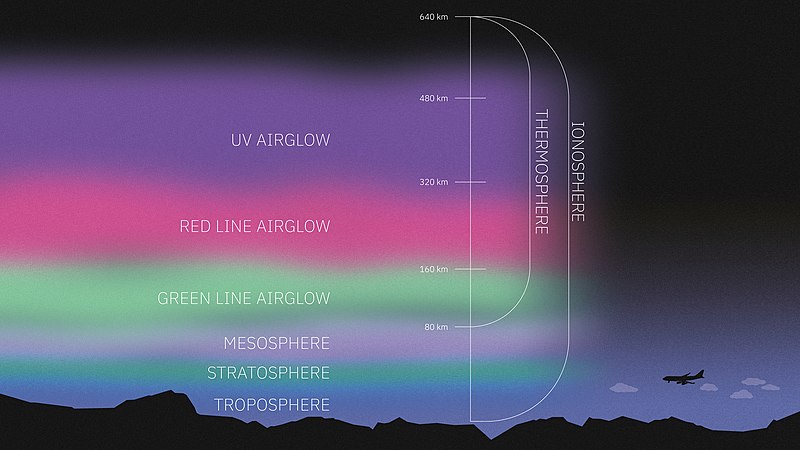
Image by Andris.slavinskis. No changes made to image file. Licence under CC BY 4.0
4. Aurora
Auroras, sometimes mentioned in the context of airglow, are natural light displays caused by charged particles from solar wind interacting with the Earth’s magnetic field. Many people aspire to witness this spectacular phenomenon. However, if you are imaging or observing an object in the northern direction, the presence of auroras can pose challenges. While they are more prominent in northern latitudes, in southern latitudes, they might manifest as a dim red glow, potentially leading to confusion with light pollution or other phenomena.
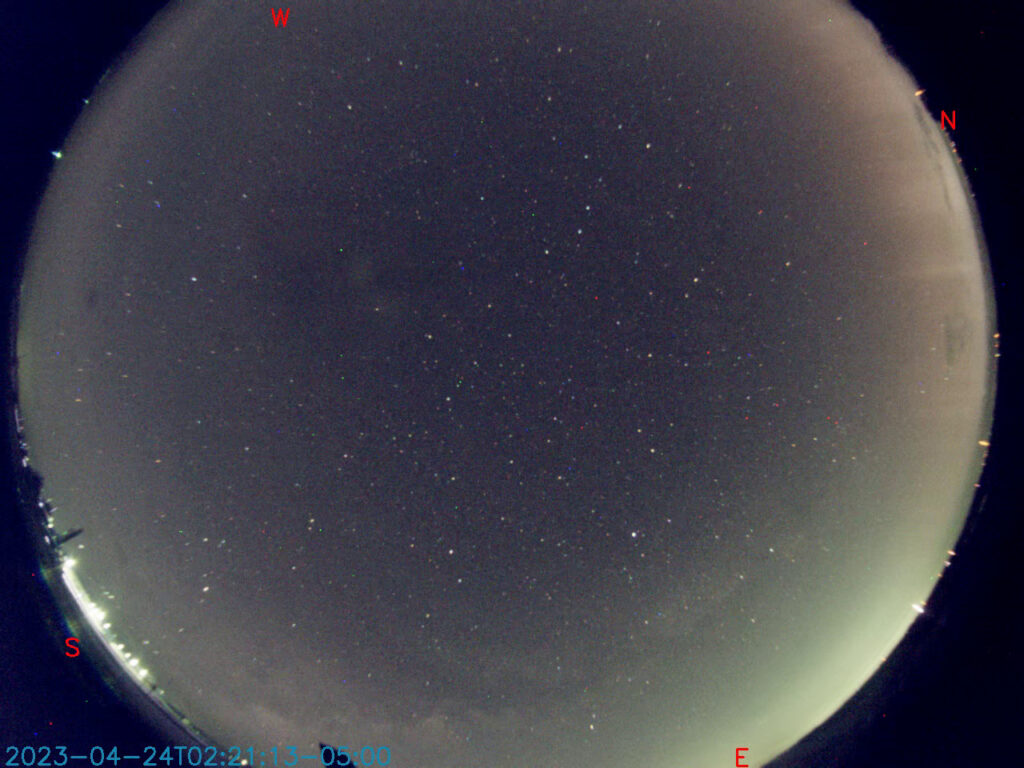
5. Summer Twilights
Summer offers an excellent opportunity to try out new astronomy equipment, as the weather is generally pleasant and vacation days are more feasible. Additionally, kids being out of school may provide more flexible scheduling. However, in some locations, there are periods during the summer when it never gets completely dark.
Astronomical twilight refers to the time when the Sun is between 12° to 18° below the horizon, and it is considered dark when the Sun is below 18°. For places around 47° latitude and above, there are times of the year when the Sun never dips below 18°. Even if you live south of 47° latitude, your dark window becomes much shorter during the summer. For instance, in Kansas at 40° latitude, in June, it doesn’t get below 18° until late in the night.
So, if your new astronomy gear doesn’t perform as well as your old equipment did during early spring, don’t hastily label it as ineffective. It might be because you’re not using it during actual darkness. To gain insight into your dark window during different parts of the year, you can use tools like Clear Outside, which generates annual darkness maps for your location.
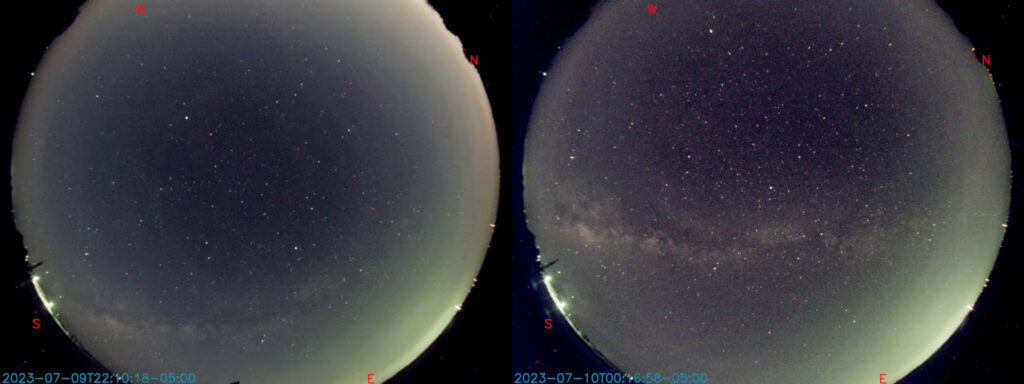
6. Atmospheric Turbulence
Atmospheric turbulence is detrimental to astrophotography due to its ability to distort and blur the images of celestial objects. As light from distant stars and galaxies passes through Earth’s atmosphere, it encounters varying air densities and temperatures, causing the light to refract and scatter. This effect, known as atmospheric turbulence, creates constantly changing pockets of different air properties, resulting in twinkling stars and blurred images.
The distortion makes it challenging for astrophotographers to capture sharp and detailed images of astronomical objects, especially at high magnifications. To mitigate the impact of atmospheric turbulence, astronomers often use adaptive optics systems or select observing locations with stable atmospheric conditions. Even if using techniques known as “lucky imaging”, a turbulent night may mean you have to drop most of your frames.
Bonus 7. Airplanes and Satelites
While an airplane or satellite passing through your field of view might not completely ruin your entire astrophotography session, it can certainly affect multiple frames, leading to undesirable results. Even during visual observing, witnessing a train of satellites might be intriguing to some, but others could perceive it as human encroachment on the magnificent universe.
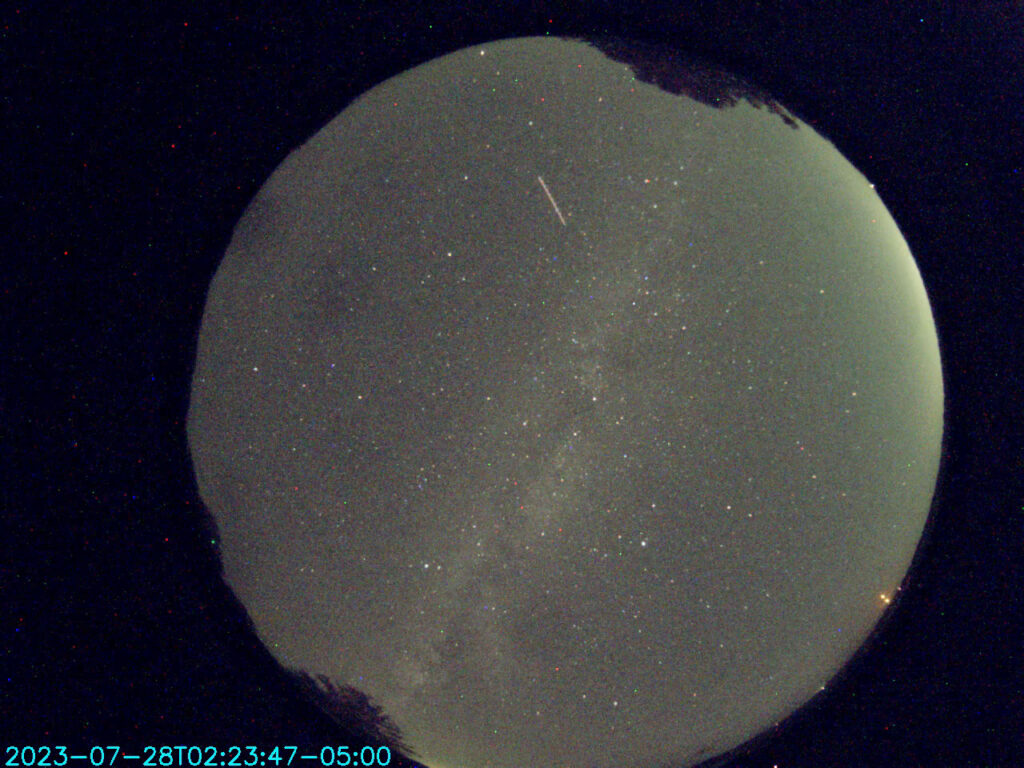
Related Articles
Astra180 All-Sky Camera
- Astra180 User Manual
- Benefits of an all-sky camera for astronomy
- 6 things in the sky besides clouds that can ruin your astrophotography or observing session
- Video: Mounting the Astra180 All-Sky Camera
- Top 5 All-Sky Camera Software
- Do your birds love your all-sky camera?
The StarSync Tracker
Shutter Latency Tool (NEXTA)
Other Astronomy Related Topics
Astra180 USB All-Sky Camera
It is a great tool to see sky conditions to aid your astronomy work.
Get instant status of remote or local observatory sky conditions
See clouds before they get in your frame
Visualize sky conditions from night to night
Can show the Milky Way (even winter Milky Way), Aurora, smoke, air glow, even high thin clouds
Compatible with many software packages
ASCOM Compatible
INDI Compatible
…